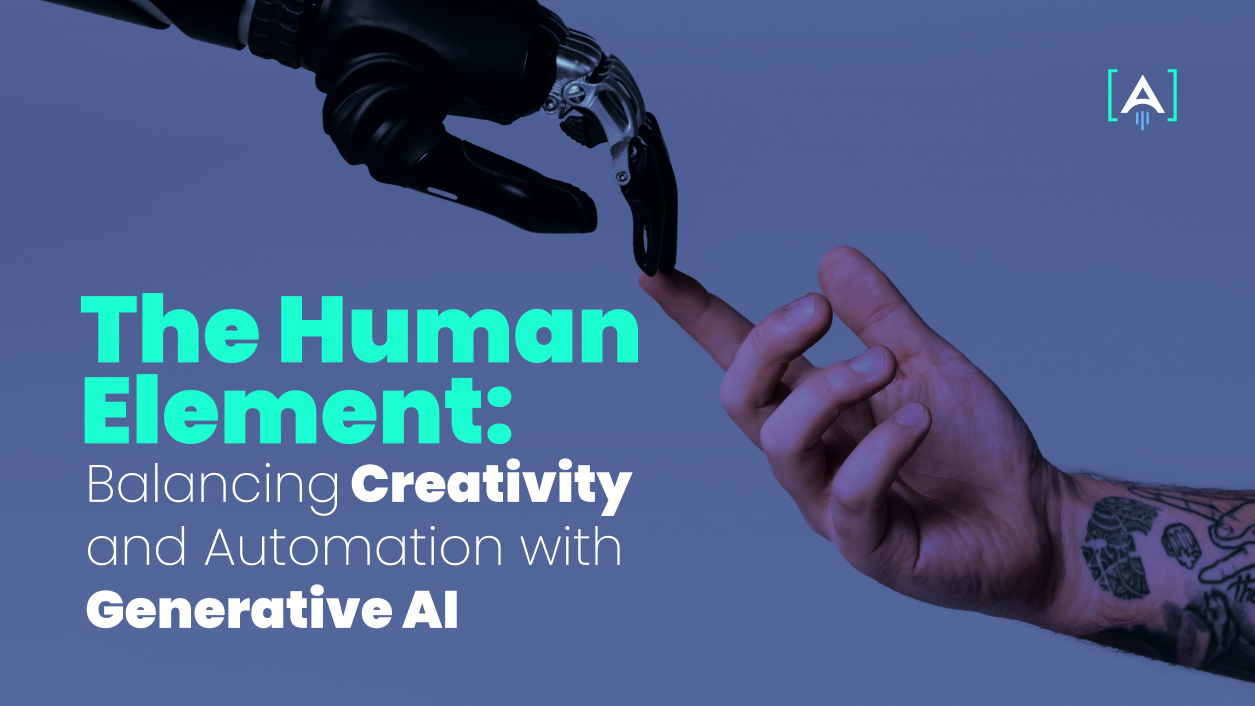Artificial Intelligence, or AI, is a term that seems to be everywhere these days. But when we talk about generative AI, we’re referring to a very particular branch of this technology.
Generative AI can make new content or ideas by learning from various data inputs. It’s like a virtual artist with an unlimited imagination, and its canvas is a wide spectrum of creative fields.
When you think about creativity, your mind might jump to works of art, gripping stories, or captivating music. Now, imagine a computer capable of creating those things.
It sounds like science fiction, doesn’t it? But it’s not. Generative AI can do all these and more. It can generate stunning visual art, write coherent and engaging text, compose melodious music, and even produce human-like speech.
This is all possible because it’s able to learn from existing data and then use that knowledge to create something entirely new.
The role of generative AI in the creative process has been steadily growing. It’s becoming a common tool for people who constantly are creatively active in their field, including growth marketers!
Imagine this scenario:
- You’re a growth marketer trying to develop a unique value proposition for a product. You input competitor data and product features into a generative AI system, and presto! It gives you a persuasive value proposition that sets your product apart.
- Or perhaps you’re a graphic designer needing fresh ideas for a logo. The AI takes in the specifications and generates a set of unique designs, helping you bypass the initial creative block.
As wonderful as this might sound, it brings us to an important question. If AI can automate creativity, where does that leave us humans? It’s here that we need to talk about balancing creativity and automation.
Despite the impressive capabilities of generative AI, creativity is not something that can be fully automated. Creativity isn’t just about producing something new. It’s about context, emotion, and human experience.
It’s about the ideas that spring up from nowhere, the sudden inspirations, and the intuitive leaps that don’t always follow logical patterns. This is the human element that generative AI, as of now, cannot emulate.
This is not to say that generative AI is an adversary to human creativity. In fact, it’s quite the opposite. Generative AI can be a powerful tool for boosting our creativity.
It can help us come up with new ideas, save us from creative blocks, and even handle some of the more mundane tasks.
In essence, it’s about finding the right balance. Balancing the limitless potential of generative AI with the nuanced, unpredictable, and beautiful chaos of human creativity. This balance will shape the future of creative industries, and it’s an exciting future to look forward to.
So, as we delve further into this subject, let’s keep in mind the vital synergy between humans and AI.
Let’s see how we can navigate through the challenges and opportunities of using generative AI in creative work while also cherishing and valuing the unique aspects of human creativity.
The Rise of Generative AI in Marketing
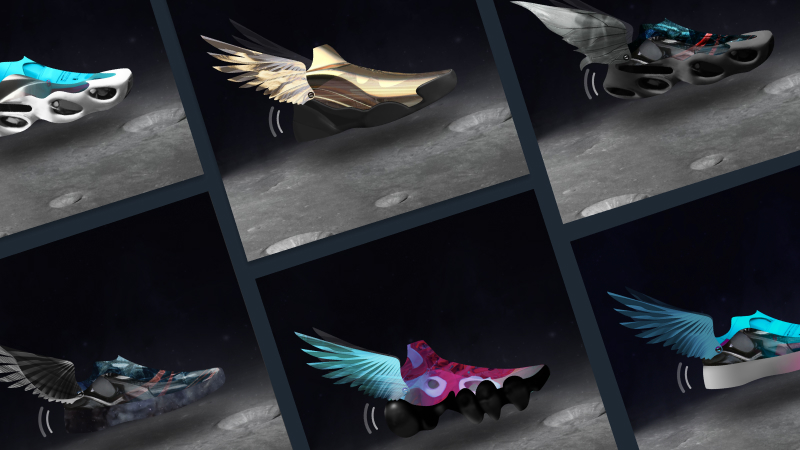
Generative AI technology, capable of producing new content from data inputs, is revolutionizing the creative process. Let’s take a closer look at how this is happening and what it means for us.
How Generative AI is Changing the Landscape of Creative Work
Think about the vast range of creative fields out there—each with its unique demands and challenges. Now, imagine a tool versatile enough to make a significant impact across all these fields. That’s generative AI for you!
Let’s consider some examples of how generative AI is transforming various industries:
- Digital Marketing: AI can generate persuasive ad copy, create compelling email campaigns, and even assist in content creation. Think of it as your in-house copywriting expert, always ready to deliver!
- Brand & Design: From generating unique logos to creating engaging visual content, AI is ushering in a new age of digital design. It’s like having a team of designers on-call, ready to bring your brand vision to life.
- Content Generation & SEO: Whether it’s auto-generating blog posts, crafting social media updates, or improving SEO, AI is taking content marketing to unprecedented heights. Picture it as your personal content and SEO specialist, working 24/
- Product Development & User Experience: From assisting in feature specification to enhancing user interfaces and even creating realistic product simulations—AI is transforming how products are developed and experiences are designed.
While these transformations are impressive, the benefits of generative AI extend beyond pure creation.
One significant advantage is the ability to rapidly generate ideas, serving as a constant source of inspiration. It’s like having a brainstorming partner who never runs out of energy or fresh perspectives.
Generative AI also accelerates the creative process. Tasks that could take hours to complete manually can be done swiftly by AI. This means more time for marketers and creators to focus on fine-tuning their work instead of getting tangled in more tedious tasks.
But as the saying goes, every rose has its thorns. With generative AI, there are challenges to consider. One concern is the potential for homogenization of creative content.
Since AI draws inspiration from existing data, there’s a risk that the output could become repetitive or derivative over time.
Then, there are questions about copyright and ownership. When AI generates a piece of content or a logo, who owns the rights to it? The creator of the AI? The user? The AI itself? These are complex questions with no easy answers.
And, of course, there’s the concern about job displacement. If AI can automate creative tasks, will human creators become redundant? It’s a valid worry and one that needs to be addressed head-on.
While these challenges might seem daunting, they are not unconquerable. Every technological revolution comes with its set of obstacles. The key is not to shy away from these challenges but to adapt, evolve, and find ways to turn them into opportunities.
It’s about striking the right balance between leveraging the power of AI and preserving the unique elements of human creativity. This balance, as we’ll see, is not just possible—it’s the way forward.
Successful Implementation of Generative AI
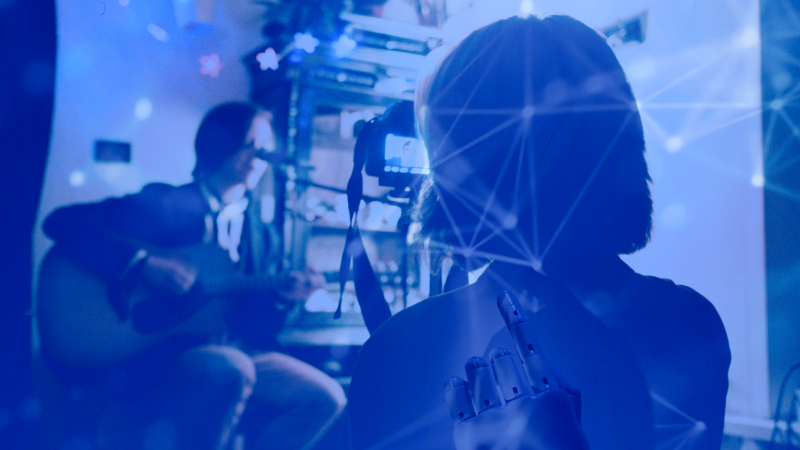
What does it look like when generative AI really hits its stride in the creative process? Let’s dive into some compelling examples across a variety of fields to find out.
Music Composition
In the world of music, AI is tuning up for a significant role. Take, for instance, the celebrated DJ David Guetta. He made headlines by using AI to generate lyrics and a rap segment in the distinctive style of the famous rapper Eminem for a live show.
David Guetta, after this experiment, declared: “I’m sure the future of music is in AI… But as a tool.” He compared AI to the electric guitar, which led to rock ‘n’ roll, and the Roland synthesizers, which spawned acid house.
AI, according to Guetta, can foster new musical styles, just as these instruments once did. But he emphasized that nothing replaces an artist’s unique taste and emotions.
Art and Design
AI is not just creating a symphony in music but also painting a new landscape in art and design.
Consider Mr. Allen, the founder of Incarnate Games, who decided to test the prowess of AI in generating art.
Using an AI tool called Midjourney, he could convert text into unique images in just seconds, providing a fascinating new approach to art creation.
This example highlights the potential for AI to open up fresh perspectives in the world of design.
Marketing Strategy Optimization
In the realm of marketing strategy, AI is redefining the rules of the game. Consider the case of Amazon.
Amazon’s utilization of AI spans multiple areas, from personalized shopping recommendations, dynamic pricing to checkout-free physical stores and even AI-driven personal styling.
Leveraging AI algorithms, Amazon tailors product suggestions, adjusts prices according to demand and facilitates seamless shopping experiences.
In the fashion realm, their Echo Look offers machine-learning-driven style recommendations, further boosting sales across diverse categories.
Writing and Content Generation
When it comes to writing, AI is rewriting the rulebook. A great example of this is ChatGPT, a text-generating AI developed by OpenAI, which serves as an impressive AI writing assistant.
This AI writer has been used to compose responses to academic questions, solve coding challenges, and even write a privacy advice letter, demonstrating its versatility and proficiency. It has proven to be an adept AI text generator, creating quality content on various topics.
ChatGPT has also shown impressive proficiency in creating long-form content, which has been useful in enhancing the writing workflow in different fields. Its capabilities are not limited to academic and technical content. It has also been used to generate website copy, blog posts, and product descriptions.
Businesses have found value in its ability to generate blogs and other types of content quickly and efficiently. Its AI content generator capability is particularly useful for businesses looking to streamline their content creation process.
OpenAI released ChatGPT for free during a feedback period, intending to utilize this feedback to improve the tool’s final version. The AI can understand when a question is impossible and tactfully refuse inappropriate requests.
However, the technology has sparked controversy regarding copyright issues and its ability to provide detailed guidance on sensitive matters when presented in a fictional context.
These examples underscore the incredible capabilities of AI in enhancing creativity and efficiency in various fields. However, we must remember that AI serves as a tool and not a replacement for human creativity and judgment.
As David Guetta puts it, “Nothing is going to replace taste… You have a certain type of emotion you want to express, and you’re going to use all the modern instruments to do that.” AI is one such modern instrument, and its melody is already resonating in numerous creative domains.
Debunking Common Misconceptions About Generative AI and Creativity
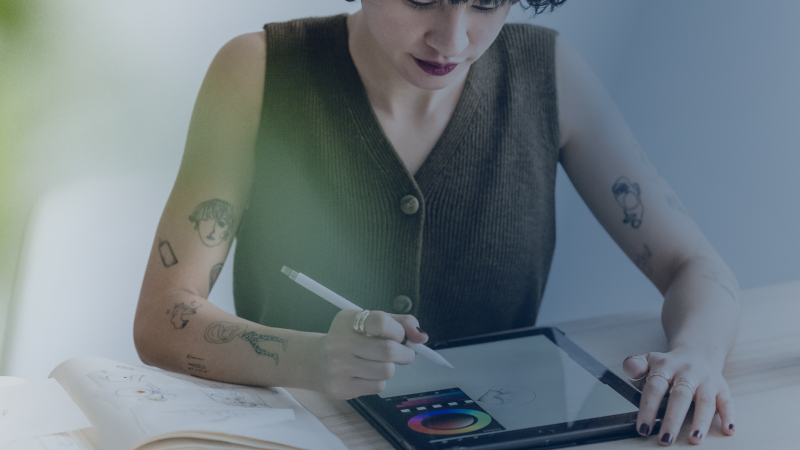
As with any emerging technology, there are a lot of misunderstandings and myths surrounding AI. Don’t fret! We’re here to clear up some of the most common misconceptions about generative AI in the realm of creativity.
Misconception #1: AI Will Replace Human Artists
The first and perhaps most prevalent myth is that AI will eventually replace human artists, writers, and musicians. But hey, let’s get this straight.
AI is a tool, not a replacement. It can aid and inspire human creators, but it can’t replicate the human touch, emotions, or personal experiences that often form the backbone of creative works.
Just like a paintbrush doesn’t paint a masterpiece on its own, AI doesn’t create art or music without human input or doesn’t create an engaging ad copy without a marketer’s creative idea and good prompting.
It’s about the synergy between human creativity and AI capabilities that leads to exciting new possibilities.
In the end, it’s humans who breathe life into the creative process, with AI being a helpful assistant.
Misconception #2: AI-Generated Pieces Lack Originality
Another common misconception is that AI-generated pieces lack originality. Well, that’s not entirely true.
While it’s true that AI draws from existing data to generate any content, the outcomes can be novel and unexpected. The AI doesn’t just copy and paste – it remixes, reinvents, and reinterprets data in innovative ways.
Think of it as a chef who uses existing ingredients to create a never-before-seen dish.
Misconception #3: AI Can’t Understand or Evoke Emotions
Some people argue that AI, being a machine, can’t understand or evoke emotions. But hold on a minute. While it’s true that AI doesn’t “feel” emotions as humans do, it can still create content that resonates with our feelings.
Remember the AI-created Eminem-style rap or the AI-composed privacy advice letter? These examples demonstrate that AI can indeed produce emotionally engaging content.
Misconception #4: AI is a Threat to Creativity
Lastly, some people worry that AI threatens human creativity, potentially stifling rather than stimulating it. Let’s set the record straight.
Rather than being a threat, AI opens up new avenues for creativity. It allows us to experiment with different styles, patterns, and ideas that we might not have thought of on our own. Moreover, it handles routine tasks, freeing up our time to focus on the truly creative aspects of our work.
So, what can we take away from this? It’s clear that generative AI has immense potential to enrich the creative process, serving as a valuable tool for marketers and artists.
Let’s embrace the possibilities AI offers while also cherishing the uniquely human elements that make our creations truly special.
The Human Element: Why Creativity Still Matters
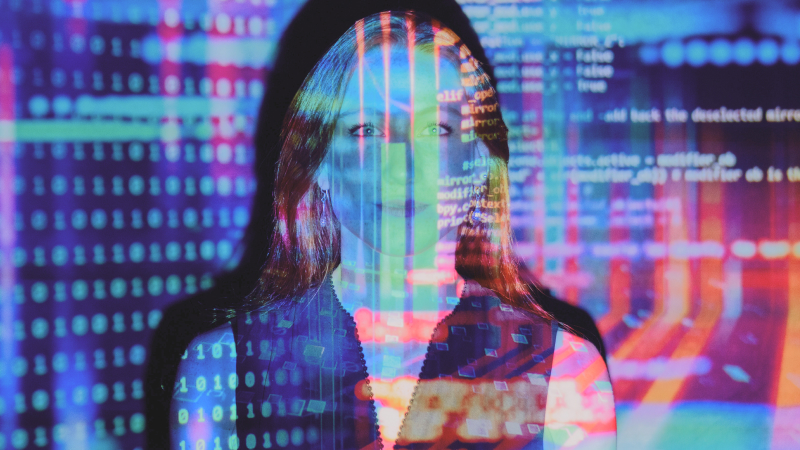
In this high-tech era, one might wonder whether AI could overshadow human creativity. The answer is a resounding no. Here’s why.
The Role of Human Intuition and Experience in Creative Work
Creativity is not just about generating new ideas or designs; it’s also about understanding and making sense of our complex world. This is where human intuition and experience become vital.
Let’s break this down a bit.
Imagine you’re a growth marketer preparing a new campaign. You don’t just base your strategy on raw data; you incorporate your understanding of the target audience, their journey, and your unique interpretation of market trends.
That’s intuition and experience at play. No matter how advanced an AI becomes, it can’t replicate this intuitive understanding that humans bring to their creative work.
Take a look at the music. Musicians don’t just play notes; they interpret and express emotions, infuse their own experiences, and tell stories through their compositions. This involves a deep understanding of human emotions, something AI, despite its advancements, can’t fully grasp.
Then there’s the content writing. A content writer doesn’t just assemble words; they shape narratives, design engaging content, and stimulate thought, drawing from their market knowledge and unique perspectives.
It’s this deeply personal and human aspect of creativity that AI can’t imitate.
Understanding the Nuances and Context of Creativity

Another essential aspect of human creativity is our ability to understand and navigate the nuances and context of our work. We appreciate cultural subtleties, social norms, and unspoken rules, and we use this understanding to create resonant art, music, and literature.
Here’s an interesting thought: A comedian making a joke about their hometown can get a laugh because they understand the quirks and nuances of that place. An AI might be able to generate a joke using data about the town, but it can’t genuinely understand the local culture and context like a human can.
Let’s explore another scenario. A startup founder can design a product or service inspired by specific market trends or user behavior because they understand the context and the underlying needs behind those patterns.
An AI might be able to suggest features based on data, but it can’t truly grasp the user’s journey, emotions, and experiences like a human can.
Emotional Intelligence and Empathy in Creative Expression
Now, let’s discuss the role of emotional intelligence and empathy in creativity. As humans, we have the unique ability to empathize with others’ experiences and emotions. We use this ability to create content that resonates with people on a deep emotional level.
Consider a growth marketer developing a brand narrative. They need to understand and evoke various emotions to create a compelling story that drives customer engagement.
They must empathize with their audience to deliver an emotionally impactful message. Despite the sophistication of AI, it can’t match the emotional intelligence and empathy inherent in human marketers.
So, where do we stand? With AI playing an increasingly prominent role in creative fields, it’s important to remember the irreplaceable value of human creativity. Our intuition, understanding of nuances, emotional intelligence, and empathy are just a few of the qualities that make us unique as creators.
While AI can assist us in our creative endeavors, the human element remains central to genuine, impactful creativity.
Limitations of Generative AI in the Creative Process
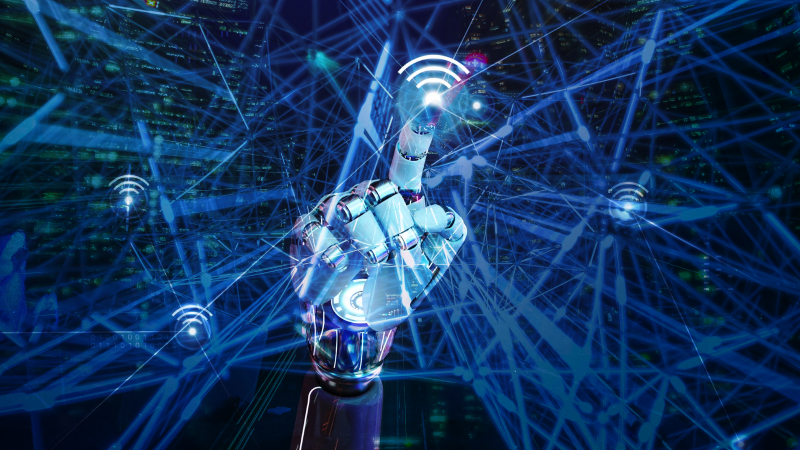
Let’s demystify the limitations of generative AI and shed light on why the human touch still matters immensely in the creative process.
Inability to Understand and Emulate Human Emotions Fully
As I’ve mentioned before, generative AI can work wonders, but it has a big gap – it lacks emotional intelligence. And when it comes to creativity, emotion is a cornerstone.
The AI perspective: AI can analyze, learn, and generate. It can mimic emotional expressions by analyzing patterns in data.
For example, if tasked with creating a logo for a wellness brand, AI can identify that soft curves, cool colors, and nature-inspired elements often signify ‘wellness.’ But here’s the catch – it doesn’t truly understand what wellness stands for in the human context.
The human perspective: Creativity isn’t a mechanical process for us. It’s a beautiful blend of our experiences, emotions, and interpretations. This emotional depth is something AI can’t capture, putting a limit on its creative prowess.
Over-dependence on Data and Patterns
Another limitation of generative AI is its reliance on data and patterns. While this trait is part of what makes AI so efficient, it’s also a limiting factor in its creative process.
Imagine you’re asked to design a social media campaign. You’d think about the target audience, the emotions you want to trigger, the content and strategies you’ll use, and more. This process is guided by your experiences, instincts, and expertise. For an AI, however, the process is quite different.
The AI approach: AI designs marketing campaigns based on patterns in the data it’s been trained on. It’s all about algorithms and learned structures. If tasked with creating a social media campaign, it would base the campaign on patterns it has analyzed from a dataset of successful campaigns.
The human touch: The beauty of human creativity lies in its unpredictability and originality. A growth marketer creates a campaign not just based on proven techniques but also on market insights, customer understanding, and their unique approach.
This makes each piece of work unique, a quality that AI, bound by data and patterns, struggles to replicate.
Moreover, AI’s heavy reliance on data can lead to issues of bias, lack of diversity, and absence of truly original ideas. If the dataset is flawed, the generated work could carry those flaws.
If the data lacks variety, the output might as well. And since AI essentially rehashes existing patterns, it can struggle to create something that’s truly out-of-the-box.
Striking the Right Balance Between Creativity and Automation
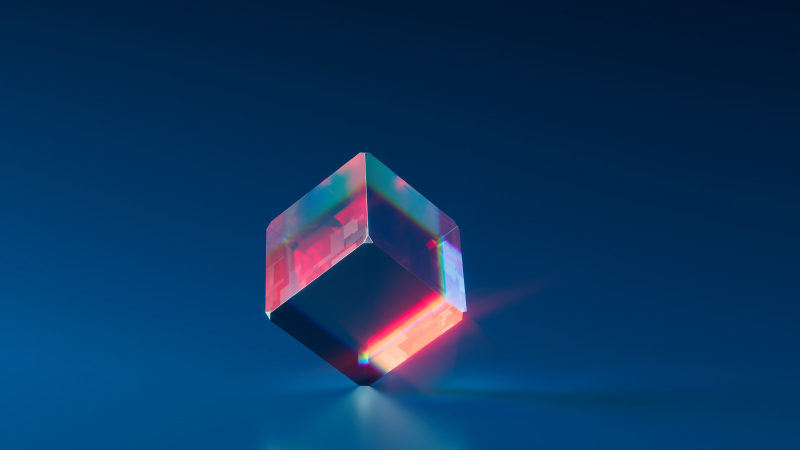
The key is to find the sweet spot – a harmonious balance between human creativity and automation.
Let’s explore how to create this synergy, focusing on the need for human-AI collaboration and the magic that happens when we embrace human intuition with AI-generated suggestions.
The Importance of Human-AI Collaboration
The idea isn’t to pit humans and AI against each other but to celebrate the unique strengths of each and see how they can complement each other.
Human ingenuity & AI efficiency: Humans bring to the table emotional intelligence, an understanding of context, and the ability to think outside the box.
On the other hand, AI excels at analyzing vast amounts of data swiftly, identifying patterns, and providing output based on these patterns. Imagine the wonders that can happen when these forces combine!
Work smart, not hard: In many ways, AI can take over the more mundane, repetitive aspects of the creative process.
This allows human creatives to focus more on what they do best – imagine, explore, and innovate. This collaboration not only enhances productivity but also opens up new avenues for creativity.
Combining Human Intuition with AI-generated Suggestions
One of the most promising aspects of human-AI collaboration in creativity is the fusion of human intuition with AI-generated suggestions. Here’s how it works:
- Inspiration: AI can churn out a variety of ideas based on analyzed data patterns. This could serve as a creative buffet for humans, offering a range of possibilities that they might not have thought of.
But the beauty is humans can choose from this buffet based on their intuition, taste, and context understanding. The AI provides the canvas and the colors, but the human chooses what to paint.
- Refinement: Once the initial draft is created, humans can step in to refine it. They can add nuances, tweak elements, and infuse emotion into the piece – something that AI isn’t fully capable of.
- Innovation: Humans, with their ability to ‘think outside the box,’ can take AI-generated ideas and morph them into something truly unique. They can blend different ideas, go against the pattern, or add elements that no algorithm could predict.
This combination of human intuition and AI suggestions can make the creative process more dynamic, exciting, and fruitful.
It empowers humans to do what they do best – create with emotions, experiences, and originality. At the same time, it leverages the efficiency, precision, and vast analytical capabilities of AI.
As we continue to explore the possibilities, one thing is clear – the future of creativity holds promise, excitement, and a lot of collaboration between humans and AI.
Strategies for Effectively Integrating Generative AI into Creative Workflows
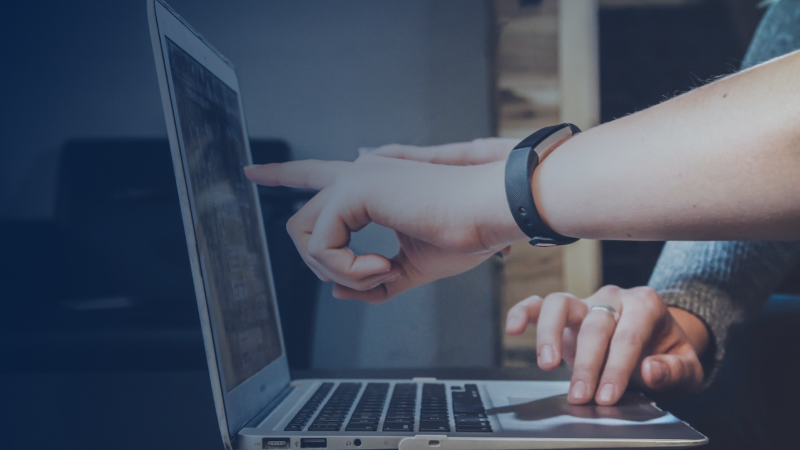
To harness the power of generative AI in creative workflows, it is crucial to establish effective strategies that ensure seamless integration between human creatives and AI technologies.
Let’s explore some key approaches that can help achieve this synergy.
Setting Clear Objectives for AI Involvement
Before diving into the creative process with generative AI, it is essential to define clear objectives for AI’s role and contribution. This involves asking questions such as:
- What specific tasks or areas can AI assist with? For example, generating initial ideas, providing design suggestions, or enhancing data analysis.
- What outcomes or results are expected from AI involvement?
- How can AI augment and support human creativity rather than replace it?
By setting well-defined objectives, you can ensure that AI is integrated purposefully, aligning it with your creative vision and workflow.
Encouraging Iterative Feedback Loops Between Humans and AI
The collaboration between humans and AI becomes more effective when there is an iterative feedback loop.
This involves a continuous exchange of ideas and refinements between the human creative and the AI system. Some strategies to facilitate this feedback loop include:
- Evaluating AI-generated output: Human creatives can assess and evaluate the output generated by AI, providing feedback on what works and what needs improvement. This feedback helps AI systems learn and adapt to better align with the desired creative direction.
- Guiding AI training: Humans can play an active role in shaping AI algorithms by providing feedback on the training data and the patterns that AI should focus on. By providing guidance and refining the training process, humans can influence the quality and relevance of AI-generated content.
- Collaborative exploration: Humans and AI can work together in an iterative and exploratory manner, experimenting with different ideas and approaches. This collaborative exploration allows for a dynamic and evolving creative process.
Iterative feedback loops foster a continuous improvement cycle, allowing AI to learn from human expertise and enhancing its ability to generate relevant and meaningful creative content.
Establishing a Balance Between Control and Autonomy in AI-Generated Content
When integrating generative AI into creative workflows, it is essential to strike a balance between control and autonomy. Here’s how:
- Human oversight: Human creatives should retain the final say and control over the creative output. They can review, curate, and select AI-generated suggestions that align with their vision and artistic judgment.
- Leveraging AI’s strengths: While maintaining control, it’s crucial to embrace and leverage the strengths of AI. AI can provide innovative ideas, generate diverse options, and expedite certain tasks, allowing human creatives to focus on higher-level aspects of the creative process.
- Exploring AI-enabled possibilities: Human creatives can explore AI-generated content as a source of inspiration, using it as a starting point to further refine and enhance their creative work. AI can serve as a powerful tool to expand creative boundaries and unlock new possibilities.
By establishing this balance, humans maintain their creative authority while benefiting from the efficiency and innovation offered by AI technologies.
Fine-tuning for Maximum Impact
To maximize the impact of generative AI in creative workflows, it is essential to invest time and effort into fine-tuning the AI models and algorithms.
This process involves optimizing the AI system to align with specific creative objectives and desired outcomes. Here’s how you can approach fine-tuning for maximum impact:
- Domain-specific training: Tailor the AI models to the specific domain or creative field in which they will be applied.
By training the AI system on relevant data from that domain, you can enhance its understanding of the specific context, style, and nuances associated with the creative work. - Adapting to user preferences: Customize the AI system to adapt to individual user preferences or specific project requirements.
Fine-tune the algorithms to prioritize certain creative elements, such as writing style or the target audience, based on the preferences of the human creatives involved. This customization helps create a personalized and tailored creative experience.
- Data curation and augmentation: Carefully curate and augment the training data to provide a diverse and representative sample that captures the range of creative possibilities.
This curated dataset enables the AI system to learn from a rich and varied set of examples, expanding its creative capabilities.
Remember, fine-tuning is an ongoing process that requires continuous evaluation and improvement. Regularly assess the performance of the AI system, gather user feedback, and refine the training process to ensure that it consistently delivers impactful and valuable creative output.
Integrating generative AI into creative workflows requires a thoughtful and strategic approach. By setting clear objectives, fostering iterative feedback loops, and finding the right balance between control and autonomy.
This harmonious integration opens up new horizons for creativity, amplifying human potential while embracing the capabilities of generative AI.
The future of creative workflows holds immense promise, fueled by the synergy between human ingenuity and AI-powered assistance.
Preparing the Creative Workforce for the Future
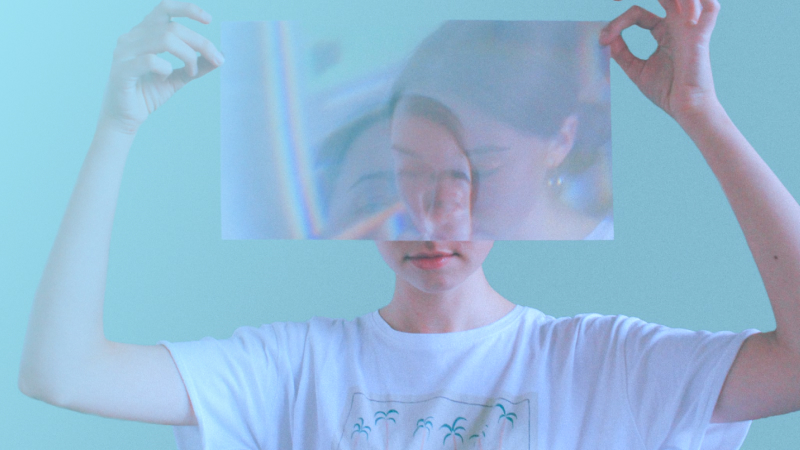
Let’s prepare the creative workforce for the challenges and opportunities that lie ahead.
Here are two key strategies for equipping creative professionals for a data-driven future:
Upskilling and Reskilling for a Data-Driven World
To thrive in a data-driven world, creative professionals need to acquire new skills and deepen their understanding of AI technologies.
Here are some ways to upskill and reskill the creative workforce:
- Data literacy: Develop a foundational understanding of data concepts, including data collection, analysis, and interpretation. Creative professionals should be familiar with the principles of data-driven decision-making to effectively leverage AI-generated insights in their work.
- AI fluency: Gain proficiency in the basics of AI technologies, including generative models and machine learning algorithms. This knowledge will enable professionals to collaborate effectively with AI systems and understand their capabilities and limitations.
- Ethical considerations: Explore the ethical implications of AI in the creative process, including issues related to bias, privacy, and ownership. Understanding these considerations is essential for the responsible and ethical use of AI technologies.
- Collaborative mindset: Foster a collaborative mindset among creative professionals, emphasizing the importance of working alongside AI systems as partners rather than competitors. Encourage cross-disciplinary collaborations and facilitate knowledge sharing between AI experts and creative practitioners.
Fostering a Growth Mindset and Adaptability in Creative Professionals
In addition to acquiring new technical skills, nurturing a growth mindset and adaptability is essential for creative professionals to thrive in an AI-driven future.
Here’s how companies can foster these qualities:
- Embrace learning opportunities: Encourage continuous learning and professional development within the creative workforce. Provide access to training programs, workshops, and resources that promote skill acquisition and encourage experimentation with new tools and technologies.
- Emphasize agility and flexibility: Foster an organizational culture that values adaptability and embraces change. Encourage professionals to be open to new ideas, approaches, and technologies, enabling them to pivot and adapt to evolving creative processes.
- Promote experimentation and risk-taking: Create a safe environment where creative professionals feel empowered to take risks and experiment with AI technologies. Encourage them to explore new possibilities and learn from failures, recognizing that innovation often arises from stepping outside of their comfort zones.
- Support creativity within constraints: Help individuals understand how AI can be used as a tool to enhance their creative processes rather than replace their expertise. Emphasize the role of human intuition, interpretation, and ideation in conjunction with AI-generated suggestions.
The combination of technical expertise and a growth-oriented mindset will enable the workforce to thrive in an AI-powered future, pushing the boundaries of creativity and delivering remarkable outcomes.
Conclusion: Embracing the Collaborative Frontier for Limitless Creativity
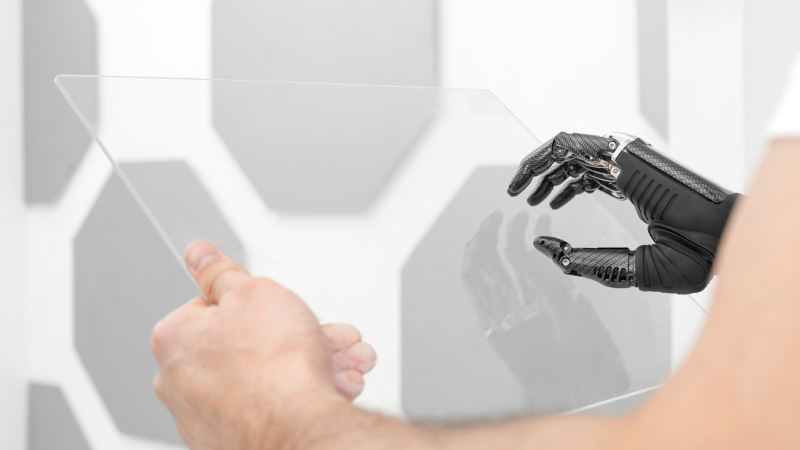
In the dynamic landscape of the creative industries, finding the perfect balance between human creativity and the power of generative AI is a key to unlocking new realms of innovation.
Throughout this exploration, we have discovered the significance of embracing a collaborative future, where human intuition and generative AI harmoniously intertwine to push the boundaries of what is possible.
As we conclude this journey, let us reflect on the importance of striking the right balance and encouraging a mindset that embraces collaboration and adaptation.
Harnessing the Power of Generative AI
Generative AI has demonstrated its immense potential in various creative domains, from music composition and art to writing and content generation for marketing campaigns. It offers novel avenues for exploration, fueling inspiration and streamlining processes.
The ability to generate content, identify patterns, and uncover new possibilities can be a powerful tool in the hands of professionals. However, it is crucial to recognize the limitations of AI and ensure that it complements rather than replaces human creativity.
Balancing Creativity and Automation
The true magic lies in striking the delicate equilibrium between human ingenuity and the capabilities of generative AI.
The creative process thrives on human emotions, experiences, and intuition, elements that are not easily replicated by AI. By blending the strengths of both humans and AI, we can unlock new levels of creativity, efficiency, and innovation.
Collaboration: The Key to Unleashing Potential
Embracing a collaborative future is paramount in the creative industries. It involves fostering an environment where human creatives and AI systems work together, complementing and inspiring each other.
Through collaboration, artists or marketers can leverage AI’s analytical capabilities, data-driven insights, and pattern recognition to augment their own creative processes.
This synergy unlocks uncharted territories, enabling groundbreaking ideas and pushing the boundaries of imagination.
Upskilling and Adaptability: Nurturing the Creative Workforce
To fully embrace the potential of generative AI, it is essential to prioritize upskilling and adaptability. The creative workforce of the future should be equipped with the necessary knowledge and tools to integrate AI seamlessly into their workflows.
Continuous learning, openness to new technologies, and a growth mindset are vital for staying relevant in an ever-evolving landscape.
By embracing new possibilities and embracing change, we can harness the full potential of generative AI to create transformative and impactful experiences.
A Collaborative Frontier Awaits
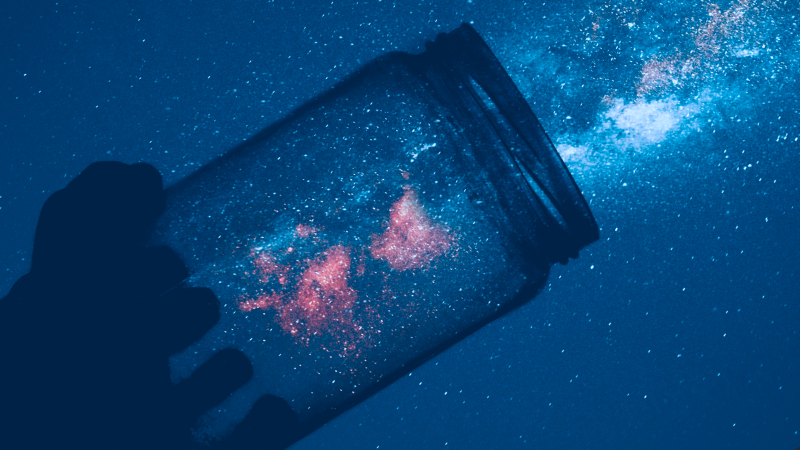
The future of the creative industries lies in embracing a collaborative frontier. By understanding the role of generative AI and large language models as a powerful tool rather than a replacement for human creativity, we can unlock limitless possibilities.
The synergy between human intuition, emotion, and experience, combined with the analytical capabilities and pattern recognition of AI, has the potential to revolutionize the creative process.
Let us embrace this collaborative future, upskill ourselves, and adapt to the changing landscape.
Together, we can create a harmonious blend of creativity and automation, shaping a future where innovation knows no bounds.
